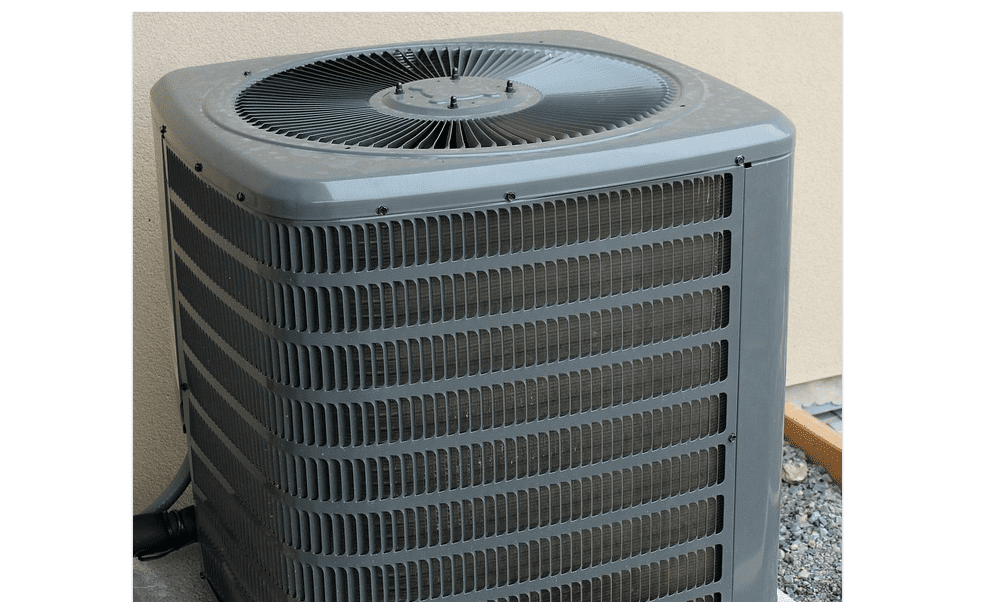No option but to move your mobile home? Naturally, you might be curious about the whole process: how it works, what to expect of moving services, how much it will cost, and where to find them in the first place. After all, it’s not every day that you move an entire home from one place to the next. In this article, we’ll help shine the way by telling you all you need to expect from mobile home movers.

Not all movers operate in all locations or across all distances
It seems that moving a mobile home is such a challenge. Not even movers are overly willing to move them at great distances. Most movers restrict their transport to a certain city, area or state. Only the most prominent movers go much further than that. It’s also partly because it’s very expensive; there simply isn’t the demand for thousands of long-distance mobile home movers.
They don’t always get the necessary permits for you
Moving a home is a dangerous and disruptive process. As such, certain states or cities require you to apply for a permit in advance before you are allowed to legally move the home. This also means that you will need to check, and apply for, permits in any and all areas that you will be going through. The authorities might also demand that you get an escort or stick to certain dates.
Some mobile home moving companies will apply for these permits on your behalf and add it onto your fee. However, it’s important to check this beforehand as not all of them do. Luckily, the permits themselves usually aren’t expensive. Only $20 dollars or so.
They might refuse to move your home
If your manufactured home is old, in bad shape, or has too many additions, a mover may very well flat-out refuse to move it. As you might’ve suspected already, it’s not that easy to move an entire house. First of all, your home will need to be inspected to see if it meets requirements for moving. A home that’s in bad shape might be deemed too risky to move. Both of these reasons are for the safety of the crew, the inhabitants, and for the home itself.
Criteria required to be met
A few of the more stringent criteria are that the:
- Home is a post-1976 mobile home built to the Manufactured Home Construction and Safety Standards.
- Chassis is in a good enough condition to support the home.
- Axles and wheels are present and in good shape.
- Home’s structure was not seriously disrupted by any additions or changes to its layout.
Remember, this is a 20-60 ton structure spanning a 1,000 to 3,000 square feet. A moment of imbalance or loss of control can seriously compromise the home’s integrity. So, it needs to be in tip-top shape.
Movers can help you prepare your home for a move
You will need to take certain steps to prepare your home for transportation. Luckily, some manufactured home movers include some of these prep services in their moving packages. Although some of it might cost you extra.
Aside from the general health of the home, there are a few specific things that the mover will look at:
- The chassis, wheels, and axles: The chassis will keep the home together during the move so it should be in good condition. No vehicle can move on the road without an axle and wheels. If these are missing or damaged, they will need to be repaired/replaced.
- Skirting: Most mobile homes have skirting. You can’t move the skirting with the home so it will need to be removed and moved separately.
- Additions: If you have a carport, shed, sunroom or patio/deck attached to your home, it will need to be detached or deconstructed.
- Securing and protecting the home: Depending on the materials and siding of your home, the movers will most likely cover it with some protective tarp or cushioning.
- Utilities: The utilities like electricity, water, etc. will need to be properly disconnected.
- Furniture: Not all movers will assist in removing or transporting furniture, but some do.
- Foundation: A professional mover will know how to safely and efficiently disconnect the home from its foundations or supports.
Movers can help you set up your home at a new location

Moving a mobile home to its new location is not as simple as sliding it off the back of a truck onto an available piece of land and then moving back in. No matter if we take the simplest scenario where you are setting up a single section single-wide home on a prepared foundation with no additions or fancy features to reattach. We are still talking about moving a multi-ton object.
This needs to be done very carefully so that the structure doesn’t come under strain to bend or crack. Not to mention that the home will have to be placed with some level of precision on its foundation. This requires an industrial crane as well as some other heavy equipment. It also requires a few people that are trained in this sort of thing.
Once the home is in place, you will also need to hook it up to utilities correctly, such as water, electricity, phone lines, etc. This requires a completely different skill set. However, it’s more likely that you could do this on your own if you have the know-how. Still, it’s usually included in any setup price from a manufactured home mover. So, you might as well take advantage of it.
How movers charge you for the service
It should be obvious that the cost of your move will largely depend on the distance between your home’s current location and its intended destination. What’s not so obvious is how you will be charged for this move as individual moving companies have different ways of doing so. In the main, movers charge a flat fee for a short distance move.
The amount of this fee will be dependant on a number of other factors that we discuss in the next section. However, you can expect this to be anywhere from $1,000 to $5,000 for a single-wide home and $3,000 to $13,000 for a double-wide. For multi or triple-wides, you will struggle to find a willing (or capable) mover at all and the price will vary greatly. This flat-fee distance is usually under 50 to 100 miles and within the same state.
Additional info on various fees …
Beyond this, most movers calculate their fees on a per kilometer basis. Once again, this rate will increase or decrease based on your home. For single-wides, this rate is usually between $5-$10 per mile and for double-wides, it could be between $6-$15.
Depending on the regulation of the states you are moving through and the size of your home, you might also require escort cars for the move. This should be arranged by the moving company. However, you will need to pay an extra rate per car. Generally, it is usually anywhere between $1-$3 per car per mile.
Keep in mind that this fee is charged on top of a flat rate that’s calculated based on the inherent difficulty of moving your home. With so many factors to consider in every single move, it’s hard to come up with any exact figures.
Your home will affect your quote price
As we mentioned, the home itself will also play a big role in how much a mover will quote you. These are the factors that play the biggest role in affecting your quote:
- Year: Older homes are riskier to move, mostly because they are less structurally sound.
- Size: The bigger your home is, the more difficult it will be to maneuver. Additionally, it will also affect whether or not you need an escort service.
- Weight: The weight will make it more or less difficult to load, unload, and transport your home. It will also increase the cost of gas.
- Materials: Certain materials, like vinyl, will require more care and protection than others, such as metal.
- Additions: Additions will need to be carefully separated from the home. It also results in extra parts to transport.
- Condition: A home in bad condition might need some prep to get ready for a move. It’s also riskier to move a home in a worse condition.
- Park or no park: It’s harder to get into and out of a mobile home park. So, whether or not your home needs to be moved into or out of one, the price will be slightly affected.
- Crawlspace
Other features
There are also some other features that play a less significant role. Nonetheless, most movers will still take these into consideration:

- Skirting
- Awnings
- Basement
- Air-conditioning
- Roof
Our example quote
As an example, you went through the process of getting a quote from a reputable mobile home mover to see what it would cost. In this scenario, we indicated that our mobile home needed transportation from Little Rock to Conway in Arkansas, a journey of roughly 35 miles.
We chose a 2013, 27 by 74 foot, double-wide with three bedrooms and two bathrooms which is a pretty standard layout. We also chose a newer model from a reputable manufacturer (Clayton Homes) and indicated that the condition was a solid 4/5 stars. This should all count in our favor as it’s easier and less risky to move newer homes in better condition.
We didn’t add on any fancy features but chose standard walls, metal siding, decorative skirting, a slightly pitched roof, etc. We received a quote of $14,550 to $16,800. So, as you can see- not cheap at all. This is for a mobile home configuration that many homeowners would have today.
How to find mobile home movers
It’s surprisingly difficult to find a mobile home moving agency online. Normally, you could just type what you want into Google and then take the pick of your results. Not so much when it comes to mobile home movers. However, you will have better luck adding the area in which you stay to your search.
For example, searching for mobile home movers Texas got us a few results of which Exclusive Mobile Transport is one of the best. That’s because not all movers have centers spread throughout the U.S. Most of them prefer to only move locally or within a state.
Look out for ones who offer services that benefit YOU
You might also be able to find local mobile home sellers who also offer transportation services. For example, in the same search, we found Texas Built, which is a pretty famous mobile home manufacturer in Texas. As a matter of fact, they also happen to offer transport services, whether you have a Texas Built home or not!
Another way to get in touch with a mover is to go to the websites of well-known manufacturers, resellers, or wholesalers. Check out White Gloves, for example. More often than not, they provide a service (sometimes paid, sometimes free) that you can use to generate a quote. Or you can use it to compare multiple mobile home movers. You just need to provide some information on the home, pay (if required), and whalla! You’ll get a whole list of quotes that you can compare on the spot! Furthermore, you can get the contact information of the movers.
You might want to check in the local Yellow Pages, Junk Mail, classifieds or phonebook if you’re still struggling online. Lastly, see if there are any mobile home realtors in the area. They are usually well connected by anyone working in the industry in the same area.
Other options

There aren’t too many in the way of other options when it comes to moving your home. It’s an arduous and expensive task, but if it needs to be done, it needs to be done. If you’re a buyer, and you don’t want to hire a mover, your best option will be to look for a mobile home seller that offers moving services.
If you’re currently living in the home you want to move, you should consider whether coughing up $10,000+ is worth it. After all, that’s a significant portion of the cost of simply buying a new home. Not to mention that moving the home might make it lose its HUD compliance or make it impossible to finance in the future.
Find the help you need and start packing away!
We hope that you now feel confident enough in this whole process. Think about whether you should pick up the phone and call mobile home movers to transport your home. Or maybe scrap the idea. Knowing what to expect can never harm your chances of arriving at the correct decision for your situation.
If you do think it’s time to leave your home behind, we have you covered with an article helping you move out of your mobile home and making it go off without a hitch. Good luck!


